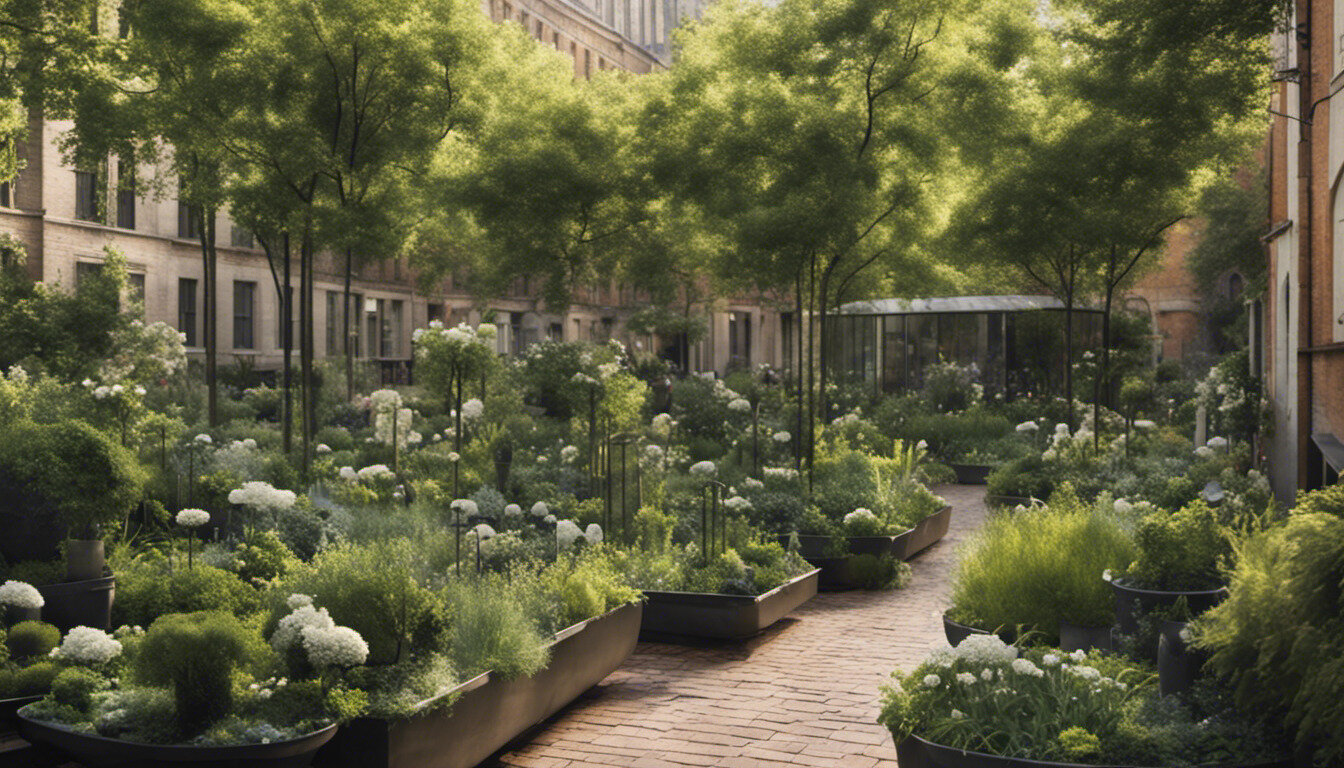The Best Guide To City Blooming
The Ultimate Guide To City Blooming
Table of ContentsNot known Facts About City Blooming7 Easy Facts About City Blooming DescribedTop Guidelines Of City BloomingCity Blooming Fundamentals ExplainedCity Blooming Can Be Fun For Anyone

As a matter of fact, as you walk the streets of the Bronx, Southside Chicago or East Oakland, you may see have actually even seen big plots of ripening vegetables and fruits being gathered. What precisely are city farms and area gardens? Are they various? If so, exactly how? And extra notably, just how can you support them? Urban farming, metropolitan farming, or urban gardening is the technique of cultivating, handling and dispersing food in or around metropolitan areas.
Generally, city farming as a technique is a bigger financial investment than horticulture. There are plenty of extra hours invested into the trivial matters of farming, from the crop strategy to the tending of your beds. This time commitment takes on an entire new significance once you recognize the goal that is being functioned towards and committed, specifically that of gaining an abundant yield of crops to be consumed.
An area garden is a single item of land gardened jointly by a group of individuals. Community gardens utilize either individual or shared plots on personal or public land while producing fruit, vegetables, and/or plants expanded for their appealing appearance. The fundamental model right here is that a big team of people each contribute a reasonably percentage of time to working their own story, and get the fruits of their labor therefore.
The City Blooming Ideas

, and neighborhood organizations by assisting them establish and grow their very own yards. The differences in between area yard and metropolitan ranch are nuanced, though in the end the same basic task takes placefood crop cultivation however within various business frameworks - sustainability.
Urban farms are usually more business and my latest blog post innovation oriented, with the main function of maximizing yields and marketing produce. Industrial metropolitan farms are frequently targeted at expanding manufacturing on generally tiny acreage with advancements in modern technologies such as tank farming, hydroponics, and greenhouses and might partner with a commercial kitchen to create locally-produced value-added products such as jams and sauces.
An Unbiased View of City Blooming
The produce is typically grown on a much smaller range and is taken home to eat at home or to share. By providing much required environment-friendly areas in penniless, concrete metropolitan areas, they permit the benefits of yard gardening to those lacking backyards, and serve as excellent instances of self-organization and community advocacy.
Some neighborhood yards, often in metropolitan areas, relocate into expanding for industrial usage while some urban farms open up their land for more socially mindful advantages. No matter how you specify and differentiate both, they are both favorable forces forever in cities around America and the globe. They both provide much easier access to fresh, regional fruit and vegetables; improve a community's visual; and serve as excellent educational tools, instructing individuals where their food originates from. Small Axe Peppers has currently partnered with over 73 community gardens around the USA.
As all of Small Axe Peppers' hot sauces are sourced with peppers from neighborhood yards, your purchases directly help money these local jobs (https://allmyfaves.com/cityblooming?tab=City%20Blooming). Take component in the transformation by.
A buddy of mine lately commented in a conversation about horticulture that "It's interesting, I've constantly assumed that farming as a practice is rather like horticulture. As I invested even more and even more time in my Urban Farming course I have actually come to realize that to say that gardening is a small extension of agriculture would certainly be a bit of stretch.
The 10-Second Trick For City Blooming
They both focus on the care of plants for some goal that can be sustenance, earnings or simply the pleasure of the craft. Additionally they both call for a financial investment on top of a time investment, something that a great deal of individuals in our quick paced life do not have a lot of - eco-friendly practices.
We can see that the similarities are abundant, but are the distinctions sufficient to develop a difference? As a trainee at NYU I have the chance to deal with the leave It Better Foundation, a team that shows fundamental nutrition and horticulture to secondary school students. https://issuu.com/cityblooming. This experience gave me an in-depth venture into the world of amateur gardening beyond what the majority of individuals have actually been in contact with
Farming as a technique is a larger financial investment than gardening. There are numerous extra hours invested right into the trivial matters of farming, from the plant plan to the having a tendency of your beds.
The average garden enthusiast goes regarding his responsibilities as a task instead than a requirement and therefore distinguishes his or herself from the farmer. With this distinction in hand, they are both comforting and peaceful workouts that anybody can pick up, which by itself must be an advertisement for both.
Things about City Blooming
Something failed - indoor plants. Wait a moment and try again Attempt once more